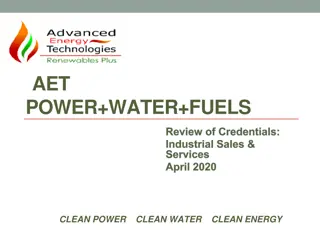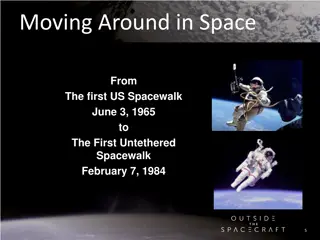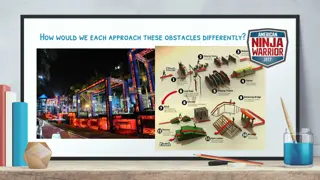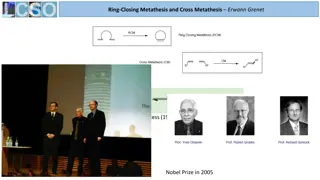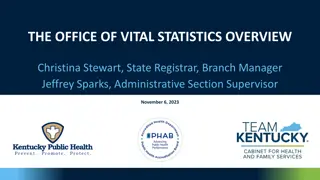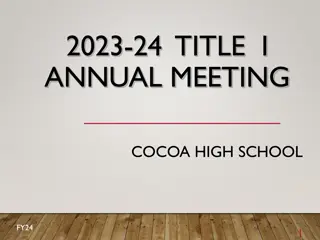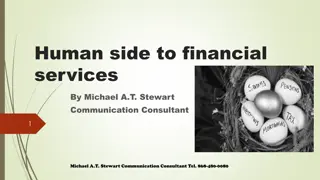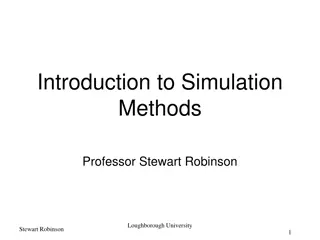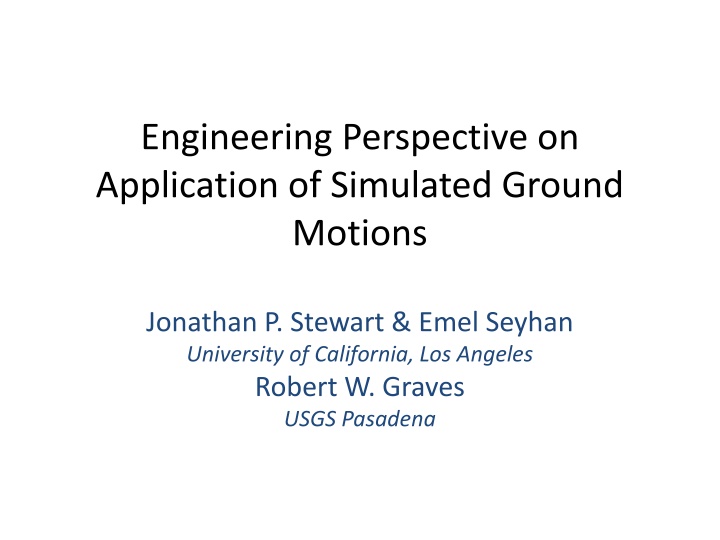
The Application of Simulated Ground Motions in Engineering Perspective
Explore the necessity of verification, validation, and calibration in applying simulated ground motions in engineering, with a focus on procedures, examples, and analysis. Learn about the importance of consistency and accuracy in comparing simulated motions with actual recordings.
Uploaded on | 0 Views
Download Presentation

Please find below an Image/Link to download the presentation.
The content on the website is provided AS IS for your information and personal use only. It may not be sold, licensed, or shared on other websites without obtaining consent from the author. If you encounter any issues during the download, it is possible that the publisher has removed the file from their server.
You are allowed to download the files provided on this website for personal or commercial use, subject to the condition that they are used lawfully. All files are the property of their respective owners.
The content on the website is provided AS IS for your information and personal use only. It may not be sold, licensed, or shared on other websites without obtaining consent from the author.
E N D
Presentation Transcript
Engineering Perspective on Application of Simulated Ground Motions Jonathan P. Stewart & Emel Seyhan University of California, Los Angeles Robert W. Graves USGS Pasadena
Outline Need for verification, validation, and calibration (VVC) Validation procedures Validation of ShakeOut motions Calibration of high frequency IMs from Graves-Pitarka hybrid procedure
Need for VVC Verification: consistency of motions across computational platforms for common conditions ShakeOut: example vel.(t) Bielak et al., 2010
Need for VVC Verification Validation: results of analysis generally consistent with recordings
Need for VVC Verification Validation Calibration: adjustment of parameters to achieve desired attribute of simulated motions
Validation Procedures Waveform comparison using earthquake data Graves and Pitarka, 2010
Validation Procedures Waveform comparison using earthquake data IM comparison to earthquake data Closest Distance (km) Graves and Pitarka, 2010
Validation Procedures Waveform comparison using earthquake data IM comparison to earthquake data IM comparison to GMPEs Frankel, 2009
ShakeOut Validation Motions from hybrid procedure
ShakeOut Validation Motions from hybrid procedure Analysis of residuals 4 NGA GMPEs R, Vs30, Z for site i
ShakeOut Validation Motions from hybrid procedure Analysis of residuals Too-fast distance attenuation SO R PH R Star et al., 20xx
ShakeOut Validation Motions from hybrid procedure Analysis of residuals Too-fast distance attenuation Too-low intra-event standard deviation Star et al., 20xx
Calibration Adjustment to high frequency component of hybrid procedure
Calibration Adjustment to high frequency component of hybrid procedure Increase Q to slow distance attenuation Seyhan et al., 20xx
Calibration Adjustment to high frequency component of hybrid procedure Increase Q to slow distance attenuation Seyhan et al., 20xx
Calibration Adjustment to high frequency component of hybrid procedure Increase Q to slow distance attenuation Randomize Fourier amplitude spectra ( ) f ( ) f A ( ) = exp A r A A = f(M) Seyhan et al., 20xx
Calibration Adjustment to high frequency component of hybrid procedure Increase Q to slow distance attenuation Randomize Fourier amplitude spectra Seyhan et al., 20xx
Conclusions Engineers want to use simulated motions Needed for conditions having sparse data Verification Validation Calibration Each step documented Avoid circularity in use of data

